International Wetlands Day is celebrated today, 2nd February, as a way to highlight the importance of these unique eco-systems. This day is especially important in Galapagos because of its unmatched biodiversity. We celebrate and recognize wetlands, which are true natural gems integral to the region’s eco-diversity.
Dr. Our Director of Conservation, Jorge Carrion, sends his heartfelt congratulation to the Galapagos National Park Directorate, for their exceptional dedication and effective stewardship Galapagos’ unique ecosystems. This recognition is directed primarily towards the Ramsar site in Isabela where conservation and biodiversity have been maintained in a delicate equilibrium, thanks to the dedicated work of park rangers. This recognition reflects on the efforts made to protect and sustain these unique environments.
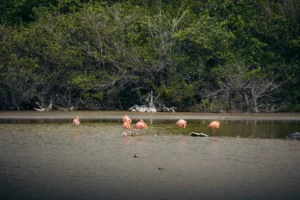
©Galápagos Conservancy
Challenges Facing Galapagos Wetlands
The wetlands of southern Isabela, which were designated as Ramsar Sites of International Importance by Ramsar in 2002, cover 872 hectares. They are home to 170 species including native and endemism. Invasive species pose a serious threat to these ecosystems, altering the natural balance in the wetlands.
To address these challenges, we need to develop strategies that are proactive and diligent. Geological formations which have created the lagoons of southern Isabela are a great example of the uniqueness of wetlands and the need to mitigate the current threats. Implemented in 2003, the Action Plan for the Conservation and Sustainable Use of Southern Isabela’s Wetlands provides a framework for the long-term sustainability of the unique Environment.
Wetlands are important for conservation.
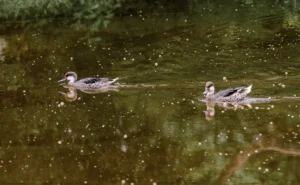
©Galápagos Conservancy
The wetlands are located within the Galapagos National Park & Marine Reserve and represent an important part of the natural heritage of the area. These ecosystems consist of mangroves and lagoons with brackish waters are formed by seawater infiltration and underground freshwater flows coming from the Sierra Negra volcano and Cerro Azul.
This vast area includes notable sites like Las Diablas and Los Tunos. It also contains Puerta del Jeli and Baltazar. These ecosystems are vital because they are located in the mangroves of Puerto Villamil Bay and shallow waters. This is the only urban area of Isabela. They are a reminder of the importance of aquatic environments for biological diversity in Galapagos.
These wetlands are essential for conserving Galapagos’ biodiversity. They provide habitats that are exclusive to certain species, which depend on them to complete their life cycles. These wetlands are home to a variety of species, including the flamingo, pintail, black-necked Stilt, oystercatcher, common gallinule, ghost crab, and Galapagos Ghost Crab.
Galapagos Conservation reaffirms commitment to protecting and conserving Galapagos wetlands which are vital to the region’s biodiversity on International Wetlands Day.
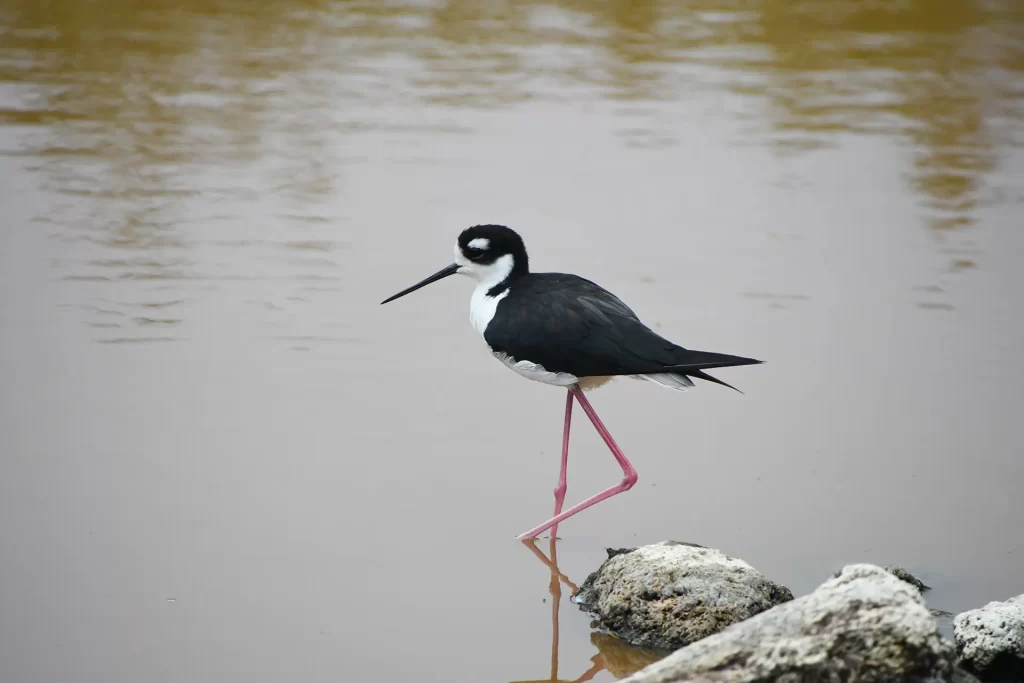
©Galápagos Conservancy
Marine ecosystems are at risk due to the escalating global coral bleaching crisis and erosion. Climate change, pollution and overfishing have all contributed to this. Coral reefs are often referred to as “the rainforests of the ocean” and are crucial for marine biodiversity. Coral reefs are vital to marine biodiversity and the beauty of the oceans. Coral reefs are second only in terms of diversity to tropical rainforests.
In the midst of this global concern, The Galapagos Archipelago is emerging as a symbol both of marine fragility and resilience. About 100 women work at the Galapagos National Park Directorate. Jenifer Suarez is a marine biologist who is dedicated to the conservation of the coral reefs on the islands.
Jenifer has always been drawn to the ocean. A scholarship accelerated her academic career, leading to a degree in biology and marine research with the Charles Darwin Foundation. In 2014, she shifted her focus to the Galapagos Directorate where she spearheaded a coral restoration project in the Galapagos Marine Reserve. Galapagos Conservancy supports her work on the ground and in the ocean.
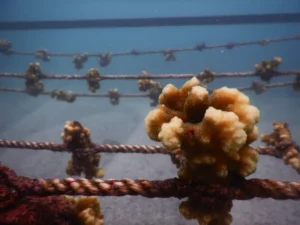
©Galápagos National Park Directorate
Jenifer is a hands-on person who has a direct response to the global problem of coral degradation. She collects coral health data during her dives to help local conservation efforts as well as global understanding. She established several underwater nurseries on Santa Cruz Island with support from Galapagos Conservancy. These nurseries are crucial in aiding the growth of corals by providing small corals to be outplanted on weakened corals reefs and in new areas. They have made significant strides towards reviving several areas in the Galapagos Marine Reserve.
Jenifer, who focuses on awareness and education in her interactions with local communities, engages many local youths to help propagate corals and plant them. She hopes that her educational outreach will instill a duty-like attitude among the residents and ignite parallel global conservation efforts.
Jenifer’s dedication and community collaboration are helping to secure the future for Galapagos reefs. It also provides an inspiring template for other corals facing similar challenges.
Galapagos Conservancy is committed to conserving Galapagos Islands’ exceptional ecosystems. As a sign of our continued commitment to this cause, we renewed today our support for the Galapagos Biosecurity and Quarantine Control Agency.
Dr. James Gibbs and Washington Tapia, the General Director of Galapagos Biosecurity and Quarantine Control Agency renewed the agreement for 2024 with a simple but significant ceremony that signified a continuing commitment from both parties to cooperate.
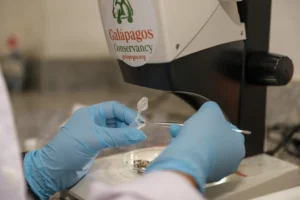
©Galápagos Conservancy
We will focus our funding in 2024 on two key areas. First, we will focus on mitigating the impact of introduced species that could be amplified by El Nino. Automating the affidavit will enhance the controls in order to prevent the introduction invasive species. These actions are vital to protect the Galapagos’ unique biodiversity and ensure its preservation for future generations.
Washington Tapia, a scientist, stressed the importance of collaboration, saying, “Our partners can count on our unwavering and steadfast commitment.” We believe that collaborative efforts and collaboration are crucial to the future of Galapagos .”
Galapagos Conservancy is proud to collaborate with the Galapagos Biosecurity and Quarantine Control Agency in order to protect this unique treasure. This collaboration has been made possible by the contributions of individuals like you who are dedicated to the conservation and preservation of this unique eco-wonder.
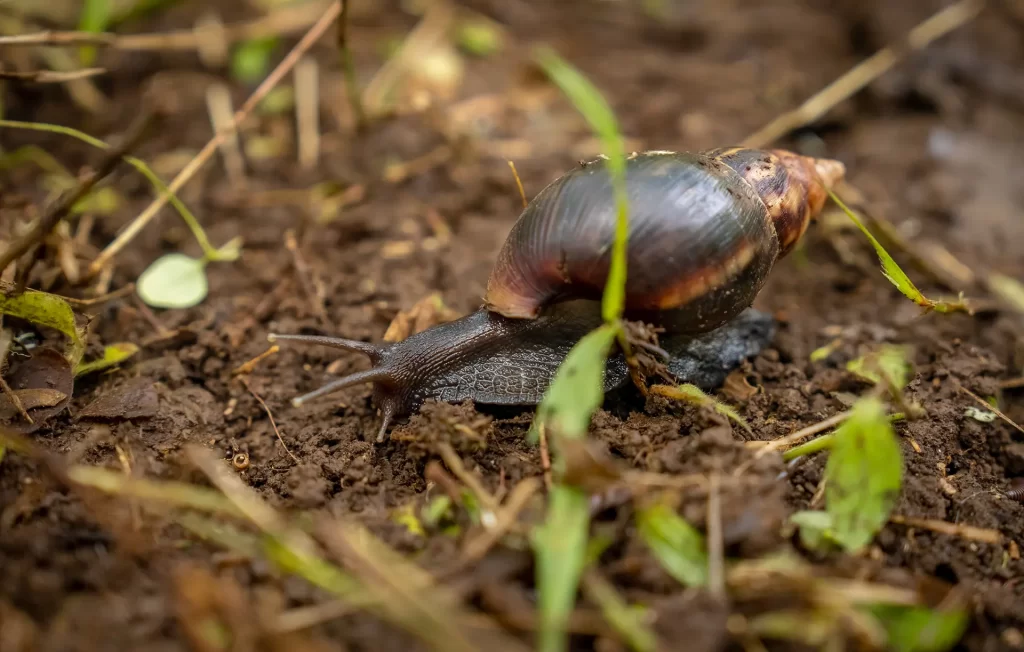
©ABG
Galapagos: A Sustainable Approach for Recovering and Resusing Refrigerators
On the stunning Santa Cruz Island of Galapagos several people committed to environmental stewardship spearhead impactful conservation initiatives. One of these innovative projects is led by Galo Ponce, an entrepreneur and his team. It focuses on the recovery and re-use of refrigerants. This project is a major step towards achieving ecological solutions in the region.
In Galapagos, this is especially important as the world struggles with climate change. It is important to minimize any adverse effects on the local wildlife and vegetation, and to avoid atmospheric damage. These compounds are commonly used in air conditioning and refrigeration systems. If released incorrectly, they can contribute significantly to global warming.
Innovation and Applied Technology
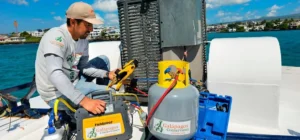
©Galo Ponce
Galo’s method is eco-friendly and more responsible than some technicians who may emit harmful gases into the air during the extraction of copper from refrigerant canisters. His method involves connecting containers with residual refrigerants to a pump that extracts refrigerant and stores it in a tank. This process reduces pollution and demonstrates a commitment to environmentally responsible practices.
Education and Community Awareness
“Our project has a uniqueness because we are using sustainable technologies and providing training to the community. We’ve taught technical staff at both public and privately-owned institutions how to manage refrigerants properly, and shown them what their participation can do for waste treatment. Galapagos Conservancy funded this project, which acknowledges the importance of small businesses to environmental protection.
Positive Environmental Impact
This initiative shows how local action can contribute significantly to the global battle against climate change. The recovery and reuse of refrigerants is a way to conserve the Galapagos ecosystem and serve as a model for other communities facing environmental challenges. We would like to emphasize that these initiatives are only possible because of the generous support from our donors. You’re not only protecting a special location, but you’re also part of a global movement that can inspire positive change.
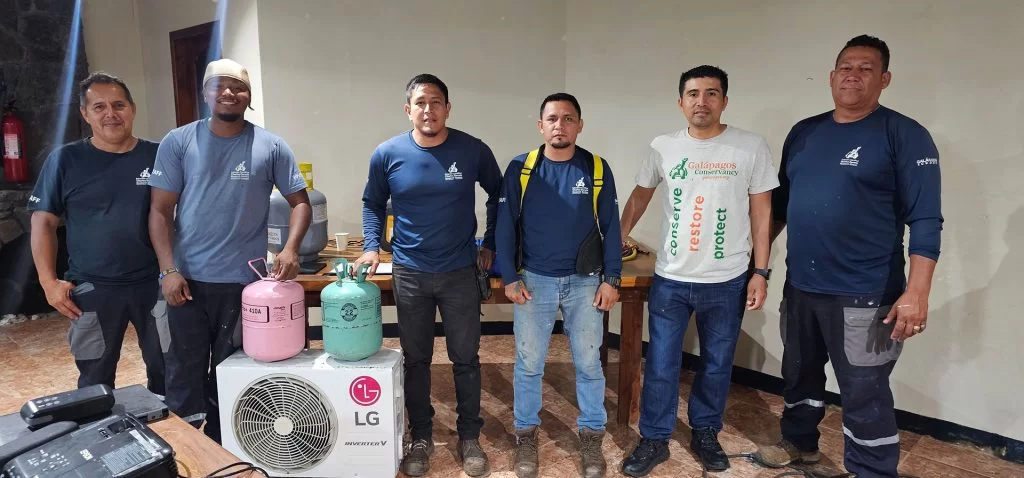
©Galo Ponce
We have reached a significant milestone in collaboration with the Galapagos National Park Directorate by conducting a comprehensive census of all nine populations, including Chelonoidis viscina, Chelonoidisguntheri, and HTML2_ Chelonoidis sp. HTML2_. This groundbreaking census thoroughly surveyed these populations, which reside in the southern volcanic areas of Isabela Island. It marks a significant accomplishment in our conservation efforts.
The Tortoise Tracking Project: A monumental task
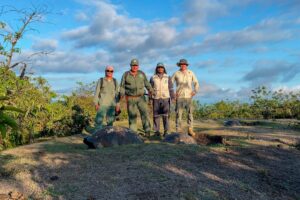
©Galápagos Conservancy
A team of scientists and park rangers from the Galapagos Conservancy took on a massive task between January 2023 and December 2023. The team’s goal was to count the tortoises in the nine populations that live on the Sierra Negra volcano and Cerro Azul.
The terrain in these regions is rough and difficult to access. The team persevered in spite of harsh weather conditions such as intense sun or heavy rain. They have shed light on mysteries and challenges that these unique species face. Their efforts have yielded valuable scientific data vital for developing optimal conservation strategy.
Preliminary results after a year of expeditions
Scientist Jorge Carrion stated that the survey was the first ever complete count of tortoises conducted in the southern part of the archipelago. This monumental effort was made possible by passionate Galapagos conservationists. It provides updated and detailed insights into the conservation status for the tortoises of Southern Isabela and their ecosystems. He said that it was a “significant milestone”.
We have updated population data on two tortoise types following these expeditions. We carefully tracked and located a total number of 4,146 C. We located and carefully monitored a total of 4,146 C. guntheri tortoises. The morphometric measurements and the location of their tortoises were carefully documented in order to better understand their distribution. Our President, James Gibbs pointed out that the new findings have revised the estimate of C. Vicina on Cerro Azul Volcano to around 5,275 individuals, and 704 for Sierra Negra.
Scientist Washington Tapia is our General Director. He stated, “Following this rigorous scientific undertaking and the subsequent analysis of data, we now have not only updated information about population status and seasonal range, but also a thorough understanding of the challenges facing the two tortoise types inhabiting this region.” This information will allow us to make management recommendations and take specific actions in order to conserve the two tortoise species inhabiting this area.
Current Conservation Challenges
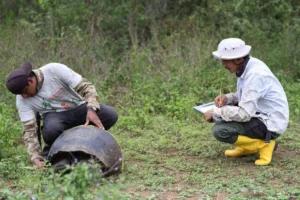
©Galápagos Conservancy
In Southern Isabela, our research team has identified threats to tortoises, particularly the newborns. C. Both C. Guntheri tortoises fight against invasive species. These reptiles are facing formidable threats from feral pigs, cattle, fire ants and rats. Feral pigs are a major threat, as they devour tortoise hatchlings and eggs. Washington Tapia said, “This is an urgent call to action, and we must intensify our efforts to protect these iconic species. The vulnerability of tortoises requires our immediate attention, and decisive actions.”
With our flagship program Iniciativa Galapagos developed in collaboration the Galapagos National Park Directorate we go beyond simple population counts. With the support of friends who are committed to conserving the unique biodiversity of the Galapagos Islands, we focus on restoring ecosystems by recovering ecologically important species such as the iconic giant turtles.
Conservation efforts by our organization for C. Vicina and C. Guntheri populations this year are testaments to the courage, resilience and commitment of our park rangers, as well as the scientists who have led the conservation efforts. Our donors’ generous contributions have been crucial in protecting and maintaining this important endeavor.
Galapagos giant turtles are essential to maintaining the balance of ecosystems. Galapagos Conservancy conducts scientific expeditions in order to manage the island’s population effectively. We are able to do our work because of the generous donations we receive from our supporters. With the support of our loyal supporters, we hope to continue to make significant contributions to conservation. Want to join us?
What can be learned from a single snout?
Scientists on Galapagos have developed a new technique that allows them to gather information about sea lions’ foraging habits. This will help to better understand the species ecology and their sensitivity to changes in the environment.
Stable isotopes analysis is a technique that measures the relative abundances of isotopes in animal tissue. This method is based upon the notion that each species’ unique signatures for these isotopes are revealed by those who eat them. A small amount of tissue can be used to determine what an animal has eaten. A similar technique to treering analysis is the sampling of tiny pieces of tissue, like a whisker from different body parts, at different stages in an individual’s lifetime. This allows you to not only determine what they ate generally, but also at what age.
Scientists collect samples of whiskers from Galapagos Sea Lion pups (Zalophus wollabaeki) and analyze isotopes in them. Sea lions have thick, stiff whiskers that grow slowly and remain on their muzzles for many years. By sampling and analyzing the whisker, you can determine what the sea lion ate at different ages and times of the year.
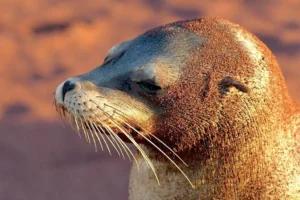
©Theresa Bucher
Researchers have studied the behavior of females sea lions in the pre and postpartum stage by analyzing the whiskers. The researchers found that female sea lions foraged differently and consumed different prey in these two phases. The sea lion mother ate different food before and after she gave birth to her pups.
Sea lions are now learning to eat more than just fish, as they were previously believed. This means that they will be able to adapt better than other species of sea life.
Scientists have discovered that one large colony of Sea Lions is actually made up of several subgroups, which forage and eat in different areas of the archipelago.
This information is combined with other data in order to create a complete picture of behavior and resilience
The Galapagos National Park Directorate uses the information derived from these analyses to create a management plan for this iconic species.